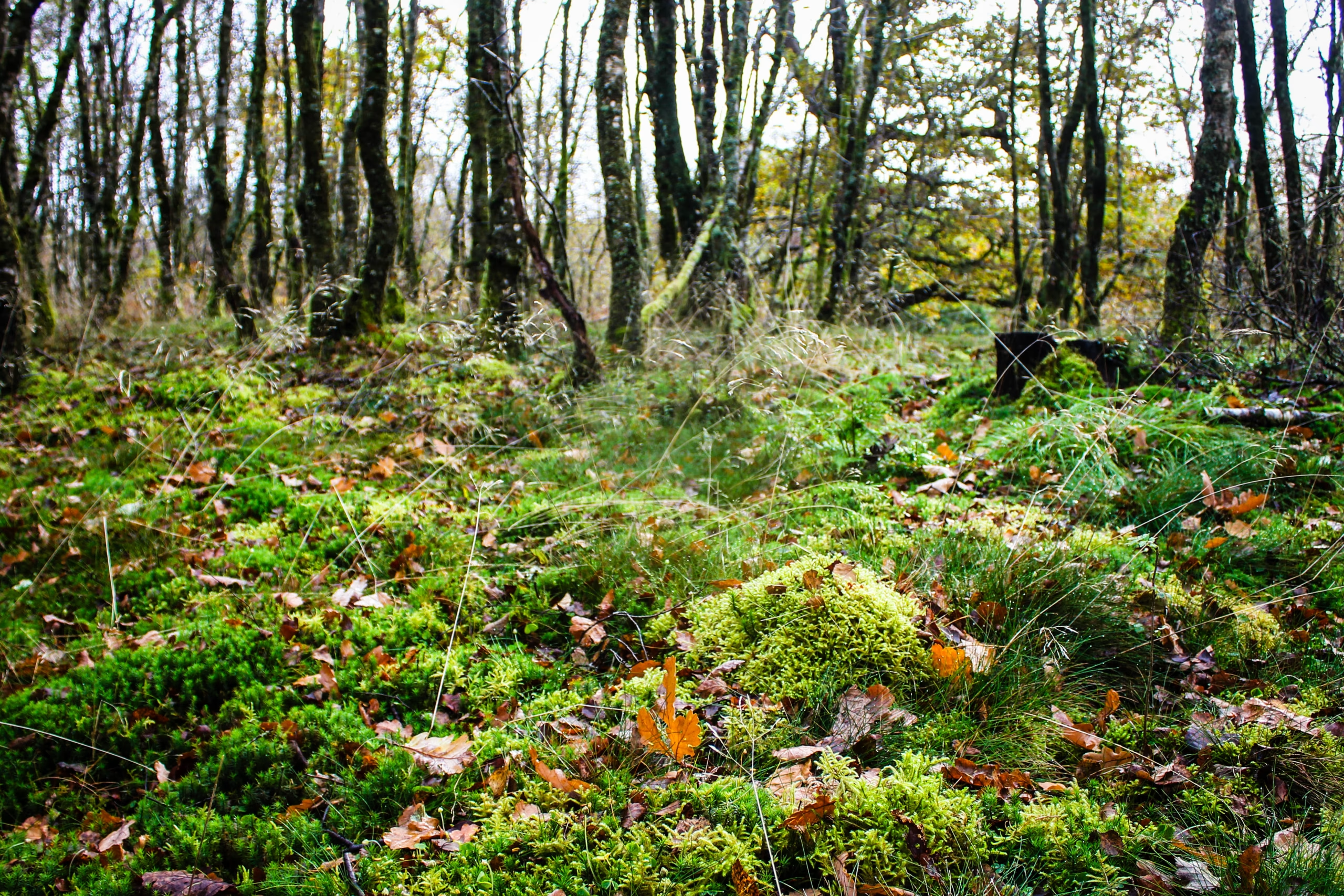Hope for the Ghost Woods

This is the third part of our Ghost Woods blog series, considering where we go now we know that we have to bring our Ghost Woods back to life.
Our hope for the ghost woods lies in their restoration. In these dark plantation forests, the spirit of the ancient woods still remains, desperate to make a comeback and reawaken the flowers, trees and fungi which can best sustain our native wildlife (you can read more about how they came into being in our blog ‘The Way the Woods Were Lost‘).
Currently there are around 198,000 hectares of Ghost Woods in the UK.

The light conditions created by thickly stocked conifers creates conditions that suppress other native plants, particularly the all-important understorey, as well as the wildflowers that spread across ancient woodland ground. This suppression of flora biodiversity has a knock on effect on fungi and fauna biodiversity too. While by no means empty of life, plantations do not support the same diversity and abundance that ancient woodlands do. And with the catastrophic decline of nature in the UK, it’s clear that restoring Ghost Woods could be a huge step in the right direction.
You can read more about this in another blog here.
How can Ghost Woods be restored?
There are many different methods of restoration, and, as every Ghost Wood is different, so is the best way of restoring it.
The norm is to begin restoration by clear felling plantations (cutting down all the timber crop in one fell swoop), which is often the cheapest and simplest method. However, this can lead to erosion of soil, the loss of understorey plants, as well as clearing out those animals that do live in plantation woodlands, such as goshawks and badgers. Such a shock to the habitat could be disastrous, and so ‘continuous cover forestry’ is playing a bigger and bigger role in restoration.
Sensitively thinning and allowing regeneration of natural growth to come through ensures a smoother transition. However this isn’t always possible, for instance, this study shows that Western Hemlock plantations may need to be clear felled and native species planted and managed to restore lost ancient woodlands, since when it is left to naturally seed Western Hemlock continues to dominate the woodland. Larch plantations are also often clear felled to prevent the spread of larch disease.
There is also a discussion about closed canopy or a more mosaic habitat. For a long time we believed that Britain was so densely forested that a squirrel could run from the south of England to the north of Scotland without ever touching the ground. Some research now suggests that we instead had a more diverse and mosaic habitat, with spaces being opened up by large roaming herds of herbivores. So as we talk about restoration, there is space to be bold in envisioning what restoration of our Ghost Woods might look like.
The ideal for restoration is always natural regeneration; allowing the seed bank in the soil to reveal its treasures, perhaps helped along with some soil disturbance from pigs, or putting out buckets of acorns to be planted by jays, as they have done in France. Research shows that animals are key in helping natural regeneration.
However, when we have unbalanced ecosystems they can also be part of the problem. The huge numbers of deer in the UK poise issues for a myriad of different habitats, and can be especially devastating for a regenerating forest, browsing on the fresh and juicy shoots. Therefore, whilst natural regeneration is essential, it is sometimes necessary to plant native tree species, as well as working to reduce deer numbers in the area. The more balanced an ecosystem we can create, the easier it is for native woodland species to recolonise their Ghost Woods; there is particularly exciting research showing that the reintroduction of pine martens helps red squirrel populations and native trees by keeping down the numbers of grey squirrels!
There are many sources of guidance for restoration out there, including from the Woodland Trust and Forestry England themselves.
Forestry England has the ability to help reverse the heartbreaking and calamitous decline of nature in our country. PAWS can and should be restored, to prevent the loss of this unique and irreplaceable habitat, both for us to enjoy, and for nature to thrive.
Our blog posts are written by our core team and guest bloggers. If you have an idea for a blog post please pitch it to us: info@wildcard.land
CAMPAIGNS
ARCHIVES
- December 2025
- November 2025
- October 2025
- September 2025
- August 2025
- July 2025
- June 2025
- May 2025
- April 2025
- March 2025
- February 2025
- December 2024
- November 2024
- October 2024
- September 2024
- August 2024
- July 2024
- June 2024
- March 2024
- February 2024
- January 2024
- December 2023
- November 2023
- August 2023
- July 2023
- May 2023
- February 2023
- January 2023
